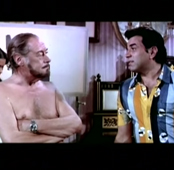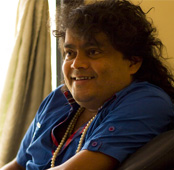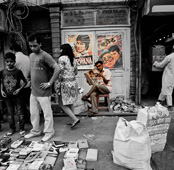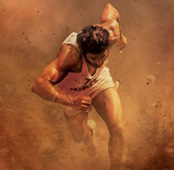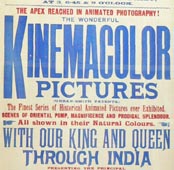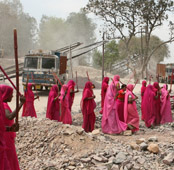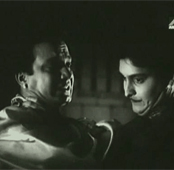-
 Invite to the launch of Revenge Of The Naked Princess
Invite to the launch of Revenge Of The Naked Princess -
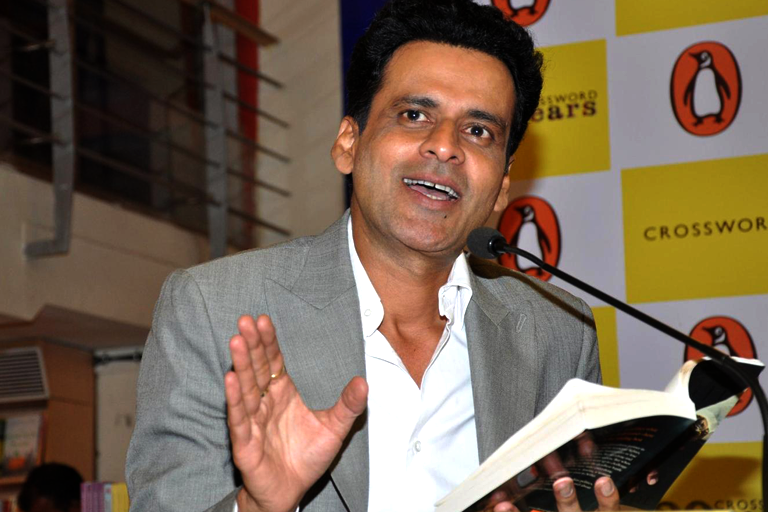 Manoj Bajpai at the launch of Sethji
Manoj Bajpai at the launch of Sethji -
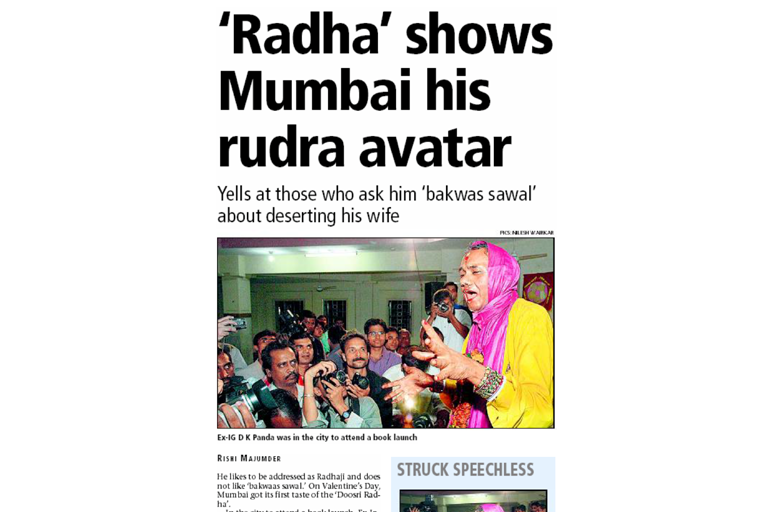 Doosri Radha in the Mumbai Mirror
Doosri Radha in the Mumbai Mirror -
 Boman Irani, Simone Singh, Tisca Chopra, Ravi Chopra, Arshad Warsi and Perizaad Zorabian at the launch of Talespin
Boman Irani, Simone Singh, Tisca Chopra, Ravi Chopra, Arshad Warsi and Perizaad Zorabian at the launch of Talespin -
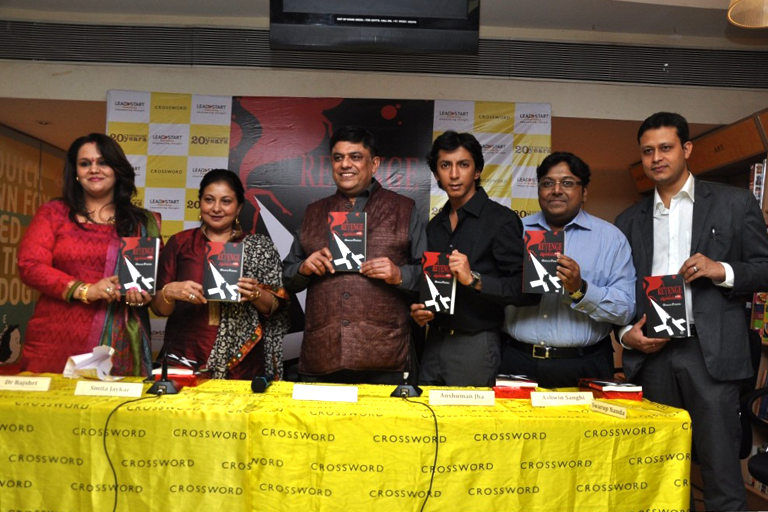 Dr Rajshri, Smita Jaykar, Oswald Pereira, Anshuman Jha, Ashwin Sanghi and Swarup Nanda at the launch of Revenge Of The Naked Princess
Dr Rajshri, Smita Jaykar, Oswald Pereira, Anshuman Jha, Ashwin Sanghi and Swarup Nanda at the launch of Revenge Of The Naked Princess
Bombay, Bollywood, Book Launches and Other Bizarre Tales
Seldom does one come across a subject whose name leaves you at a loss for a headline that will better it. Revenge Of The Naked Princess is one such.
Or not. The name of this book, on the subject tab of an email invite to its launch, has been abridged, by enthusiastic public relations personnel, to Revenge Of Naked Princess, emphasizing the weird, dropping an article, keeping it crisp. The invite reads “The launch will take place in the presence of Renowned Actors like Smita Jaykar, Anup Soni, Anshuman Jha and Spiritual Guru Dr Rajshri and Celebrity Author Ashwin Sanghi… at Crossword Book Store… Juhu… Mumbai… on 19th December, 2012.” The presence of a “Guru” at the launch of what the press release calls “India’s first novel on forced conversions” (by ex-journalist Oswald Pereira) is perhaps mandated. Dr. Rajshri has been summoned to grant the book spiritual, if not religious, legitimacy. But preceding her, in the list of distinguished invitees meant to lure recipients of the mail to the launch, are names of three “renowned actors” whom you will have to google. At the fag-end of the list is an author, who has been anointed a “Celebrity”, lest his name get lost in the crowd of luminaries.
The marked difference between an average Delhi book launch and an average Mumbai book launch is one of the many ways to consider the divide between the two cities.
In Delhi, other writers are invited to talk at an author’s book launch and the conversation, for better or worse, revolves around the subject of the book and writing in general. Of course, there is wine, smugness, snacks, gossip, literary incest and bitching concealed as self-serious debate but nothing in any of the innumerable Delhi book launches can match up to the sheer absurdity of the rare Mumbai book event.
To begin with, no event in Mumbai can possess a sense of self-worth unless attended by someone, anyone, from Bollywood. Here, even Shobha De, a celebrity in her own right, had to invite actor Manoj Bajpai to speak at the Mumbai launch of her book Sethji, on December 20, where he waxed eloquent about the first time he met her and wondered how despite belonging to “a certain section of the society” she could “delve so deeply” into the “caste system and caste conflict“. However not all authors can pull off having someone of Bajpai’s stature at their launch. And where “renowned actors” do not exist, they must be created.
***
Or substituted by characters who can hold their own against Bollywood. My earliest memory of a book launch in Mumbai is one I covered as a reporter for the city paper Mumbai Mirror on February 14, 2006. A book of Hindi love poems had been written by a journalist who had christened himself Mukesh Kumar ‘Masoom’ (Masoom, his pen name, means ‘innocent’). Hindi journalists in Mumbai aren’t as well connected as their counterparts in the English media, so Masoom had been unable to procure a Bollywood celebrity for his launch. Instead, he had invited a tabloid sensation called ‘Doosri Radha‘ (the second Radha) to launch his book of verse on Valentine’s Day. Radha is the consort of Krishna, a Hindu god. Doosri Radha is Devendra Kumar Panda, an ex-Inspector General of Police in UP who announced in 1991, while he was in service, that he had had a vision of Krishna who had said to him that he was his consort. Panda moved away from his family, wore women’s clothes and, much to the relief of the UP Police, claimed voluntary retirement. He next hit headlines when he declared that his organs were becoming “delicate and soft” and that he was metamorphosing into a woman.
Panda, wearing bangles, a large nose ring, a pink dupatta and yellow kurta and churidaar, took over Masoom’s book launch. He held forth on Karma, and on the fact that the UP government—which was delaying his pension, and which had charged him for breaching the police dress code—would soon be punished by his lord (Krishna). He denounced another ex-government employee from Jamshedpur in Bihar who, after watching Panda on TV, had said he was Panda’s ‘Krishna’ and quit his job, in turn, to dress like the god and play a flute. Panda got into arguments over such matters with journalists at the launch, and eventually began to swear at them. One enraged journalist shouted back saying: “Humnein hi to ise banaya hai, varna ye kuch nahin tha (We’re the ones who’ve made this man so big, otherwise he was nothing)”. Masoom, who hadn’t been able to speak about his book of love poetry yet, tried to calm Panda down by tapping him gently on his shoulder, at which Panda screamed abuses at Masoom till he fled the stage. He threatened to beat him to pulp if he ever touched him again, saying: “Only my lord has the right to touch me”. He added that Masoom, while inviting him there, had said that the event would be a “Krishna Mahotsav (festival)”.
***
“This reminds me of Doosri Radha,” says a writer whom I’ve accompanied to the launch of Talespin— a book of short stories by Sanjay Chopra, a pilot with Air India and husband of actor Tisca Chopra. I’d narrated the story to him only an hour ago. It is the evening of December 11 and we are at Olive, a posh Italian restaurant in the suburb of Bandra, Mumbai. The party has a smattering of Hindi film actors such as Perizaad Zorabian, Simone Singh, Boman Irani, Arshad Warsi and Gul Panag. Zorabian is compering the event. Singh and Irani have read from the book. Warsi comes up on stage towards the end, in a checked shirt that is half-unbuttoned to expose his chest, and a hand wrapped in a crepe bandage, to say that he had never thought that his friend, the author Sanjay Chopra, could write, but then Chopra had mailed him two of his stories one day and “Shit, I thought. This guy’s sensitive”.
What prompts the writer to make the comparison to Doosri Radha, possibly, is that after the readings, and the kind words, each actor has been mobbed by reporters asking questions that don’t seem to pertain to the book in any way. Panag speaks about writers in the movies and hundred years of Indian cinema. Irani talks about films and writing as well, and about the importance of the written word, and on whether he’s attending Vidya Balan’s wedding. He ends one interview saying: “Agar aapke paas koi bhi opinion hai, to aap writer ban sakte hain, agar aap bol sakte hain, to aap writer ban sakte hain. Agar aap nahin bhi bol sakte hain, toh bhi aap writer ban sakte hain (If you have any opinion whatsoever, you can be a writer. If you have a voice, you can be a writer. Even if you don’t have a voice, you can be a writer)”. Warsi is asked by a journalist whether all the ills of society can be blamed on cinema (he disagrees) and also what food he likes to eat. Among the more outrageous things he has tasted, he says, are raw frogs.
***
It is December 19, 2012. At Crossword Bookstore, Juhu, in the fiction section, actor Anshuman Jha (who played the protagonist in one of the segments of Dibakar Banerjee’s ensemble Love Sex Aur Dhokha) is reading a passage from Revenge Of The Naked Princess:
“Princess Darshana Kamya Kathodi jumped into the air like a wild cat in the jungle, twirled to a perpendicular position and kicked Brigadier Braganca with her bare, dark brown right foot. She aimed her kick at his groin with all the force her stringy, five-foot-two-inch frame could muster.
The speed and intensity of her attack was impeded a bit by the long and loose ‘ghagra’ that she wore. But the kick from the 18-year-old princess landed on its target with so much force that the six-foot-four-inch bulky Braganca fell on his back with a thud on the red polished stone floor of Princess Darshana’s bedroom.
As waves of pain coursed through his groin, Braganca screamed ‘Mama’ in agony… ”
Jha goes on for a couple of paragraphs more, then says: “This is entertaining writing. It grips you. (To the author of the book, Oswald Pereira) You’ve hooked me on to fiction. Thank you.” Jha also informs us, very helpfully, that the first piece of fiction he had read was Pereira’s previous book The Newsroom Mafia, a story of how the underworld exercised great influence over the media, released last year (before that, he says, he was only an “autobiography reader”).
Revenge Of The Naked Princess is a potboiler set in the middle of the 16th Century, when the King of Portugal, John III, ordered that civil and military bodies should assist the clergy in converting native Indians to Christianity. Upon his orders a conversion brigade wages war on a local tribe in the Yeoor Hills, now in Thane, and its princess.
“It was really from my heart,” says Pereira about the book. “One of the characters could be me.”
“It’s not easy to write about one’s own religion,” he goes on. “You face a lot of criticism. But I think, among my Christian friends, there were a lot of Christian friends who agreed that conversion was forced, that it was not a good thing to do. And others who felt this shouldn’t be written about.”
When one of the audience members asks Pereira whether it is wise to bring up such incidents from the past, after people have found their closure with such “dark tales” from history, he says: “You learn about the present only when you know about the past. We’re born over and over again. What happens in the past stays with you. I wanted to remind Christians about this, the conversions.”
A tricky conundrum— the present and the past, the past present. In the not so recent past, on the night of January 22, 1999, Missionary Graham Staines was set ablaze with his two sons while they were sleeping in their station wagon. In the still less recent past, in August 2008, riots against Christians broke out in Kandhamal, triggered by the killing of Vishwa Hindu Parishad leader Lakshmananda Saraswati. At least 38 people were killed. Soon after, in September 2008, well over 20 churches were vandalized in Karnataka. None of these incidents are recalled at this launch; no questions are raised about the impact Pereira’s novel can possibly have: a book by a Christian revisiting crimes in the name of Christianity, sold to the masses at an easily affordable price of Rs 125, prone to being transformed into juicy propaganda material by Hindu chauvinists.
Instead, these gems.
On being asked about the difference between spirituality and religion, actress Smita Jaykar goes on to say: “I’m a Hindu, my hair-dresser’s a Christian and my make-up man’s a Muslim. We call ourselves Amar Akbar Anthony. Thankfully even they, though not so educated, don’t ever say I will not come to a Hindu temple, they know when Datta Jayanti is and when Shravan Mahina starts, even more than I know.”
Jha: “I was born in Allahabad, and there was a mosque right in front of my house. My uncle didn’t let me go there. He said: They won’t allow you inside. One day later I just walked in.”
Pereira validates these inane utterances by explaining, “If you read the book, the message is the peaceful co-existence of religions.”
“It’s about the guts of a writer,” says Jha, in turn, talking about Pereira and how he wrote this book without fear of opposition from his community. “If he wasn’t scared of the bhais back then (when he wrote The Newsroom Mafia) why should he be scared of anyone now?”
I’m still trying to remember the last time underworld dons attacked a fiction writer for writing about the mafia.
Thus spake two “renowned actors” we were invited to hear. The third, sadly, hasn’t turned up. But spiritual guru Dr. Rajshri does a good job of filling in. She begins by advertising that she has cured many diseases through Karma healing, and has also helped so many cancer patients, of course. She goes on to commend the ‘spirituality’ inherent in a chapter of the book, and to say that the difference between spirituality and religion is that while the latter is “materialistic”, the former is not. Also, before leaving the venue, she says to Pereira: “Now that I’ve met you I will read your book properly”.
That leaves us, finally, with the “Celebrity Author”. “One of the reasons I loved reading your book was because it’s the sort of stuff I love writing,” says Ashwin Sanghi. “When you don’t know what is fiction and what is fact.”
Understandably. Sanghi’s last book The Krishna Key, is a page-turner which after a series of wild historical conspiracy theories (warning: spoiler ahead) concludes in its climax, rather disappointingly, that a magical Hindu alchemist’s stone is lodged inside the dome of the Taj Mahal.
Seeds for this, as well as other ideas in this novel, can be found in the thoughts of Hindu revisionist writer P. N. Oak, founder of the Institute for Rewriting Indian History, who in his book Taj Mahal: The True Story laid down why he believed the Taj Mahal was actually a Shiva temple. Oak also went on to say the Vatican was a Hindu temple. And that the papacy was a Vedic priesthood. And that Christianity had actually evolved from ‘Krishna-Neeti’.
***
I had last thought of Oak on a pleasant Delhi winter morning in 2011, in the middle of a casual chat with historian Dr. G. S. Khwaja, at the lobby of Delhi’s India International Centre. Dr. Khwaja, who is Director of Epigraphy at the Archaeological Survey of India, Nagpur, was telling me how people wouldn’t stop writing letters to his office asking whether the Taj Mahal was actually a temple. As if that was the only thing worth resolving in the scheme of history. “Educated people!” he exclaimed, very distraught. “All they want to know is whether the Taj Mahal was a temple.”
***
But to be fair, Sanghi seems to be trying to strike a balance of fundamentalisms, of sorts, in his bestseller by providing for antagonists who are evil Hindu fanatics. Pereira seems to see no need for doing this.
“If you look at organized religions the world over, you will see they have common roots,” Sanghi continues. “Take the ‘A’ out of ‘Abraham’, and you will get ‘Brahma’. And while Abraham’s consort was called Sarah, Brahma’s consort was Sarah-swati.”
“Wow,” says Jaykar.
“You have one holy trinity that is Brahma, Vishnu and Mahesh, and another which is the Father, the Son and the Holy Ghost,” Sanghi says. “And if you put two triangles of the two trinities together you get the Star, of David.”
“Wow,” says Jaykar.
A journalist in the front row, who had asked Pereira a while back whether his novel, set in the 16th century, was autobiographical in any way (Pereira had denied this), stirs.
“So if you look at these things, you really wonder: what were the crusades for?” Sanghi goes on.
The journalist nods and says: “Politics.”
Revenge Of The Naked Princess
ArticleDecember 2012
 By Rishi Majumder
By Rishi Majumder
Rishi Majumder is Senior Editor at The Big Indian Picture



